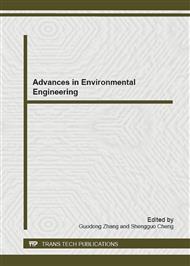p.202
p.206
p.211
p.216
p.220
p.224
p.229
p.233
p.237
Numerical Estimation of Corrosion Environment by Airborne Sea Salt Particles
Abstract:
Anticorrosion of steel bridges has been an increasingly important problem in Japan. For a proper anticorrosion and maintenance program, it is important to estimate corrosion environment of steel bridges. In Japan, airborne sea salt generated from ocean is a predominant factor. Authors have been working on establishing a consistent framework to estimate corrosion environment numerically. It consists of a local and a global approach. While adhesion of airborne sea salt particles to bridge structures are simulated locally by a CFD analysis, the large scale analysis yields a boundary conditions of the local analysis and is given by a part of a mesoscale meteorological analysis. The objective of this work is to numerically investigate reliability of such large scale analysis in estimation of corrosion environment caused by airborne sea salt particles.
Info:
Periodical:
Pages:
220-223
Citation:
Online since:
November 2012
Authors:
Price:
Сopyright:
© 2012 Trans Tech Publications Ltd. All Rights Reserved
Share:
Citation:


